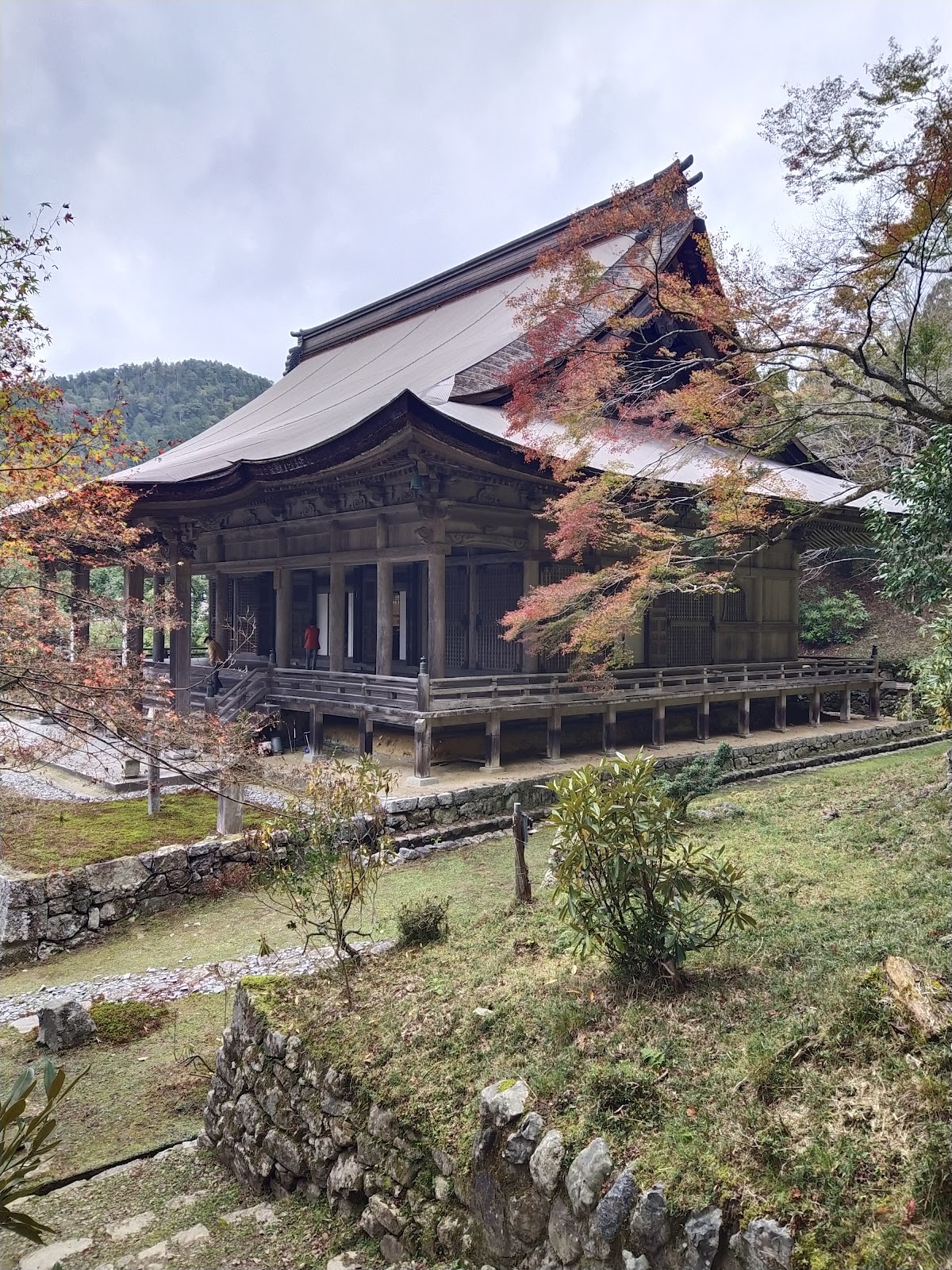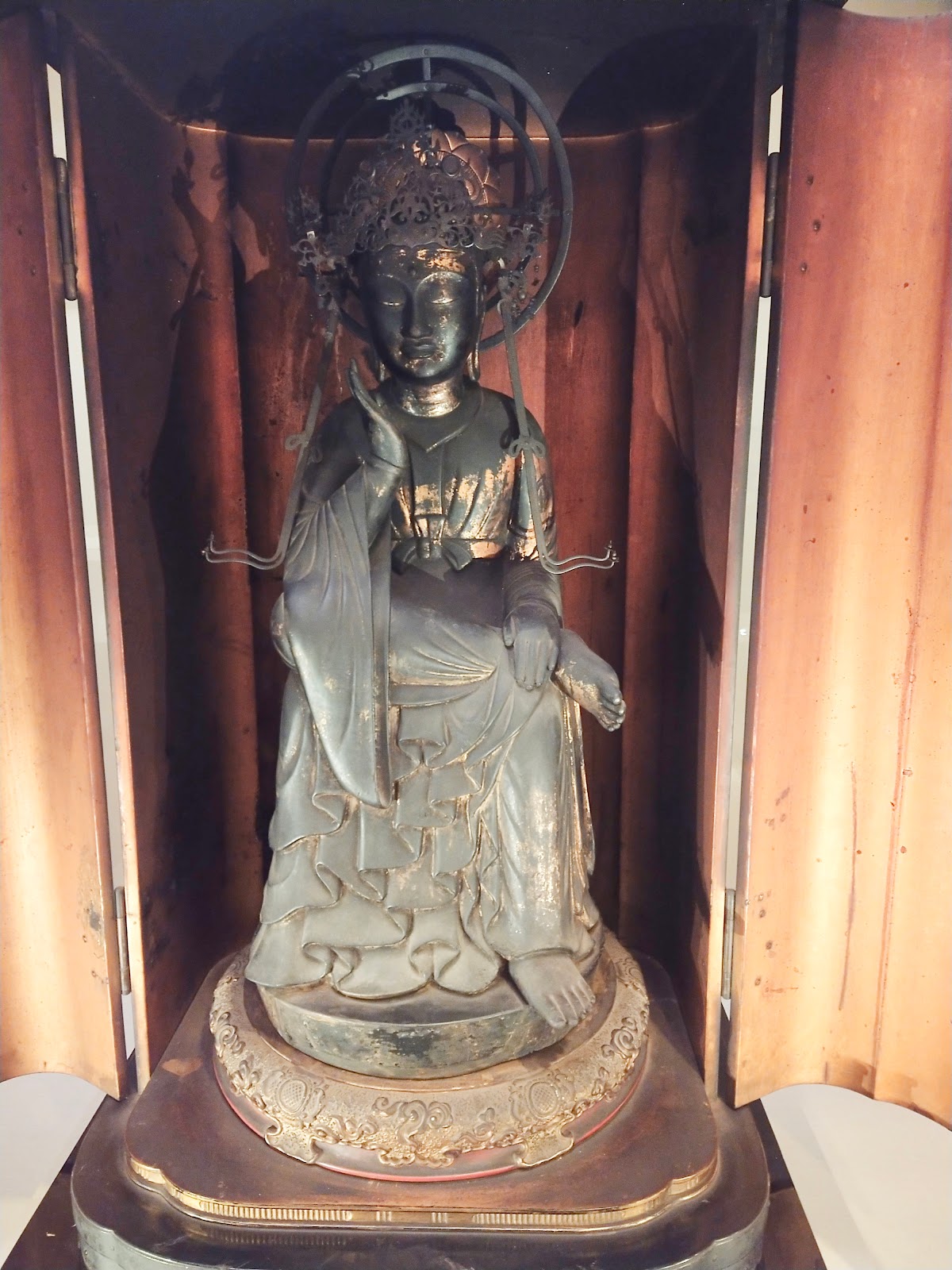The photos in this post are from a recent day trip to Ohara, a semi-rural village on the edge of Kyoto with a group of impressive temples and gardens. My wife suggested it, as we were looking for parts of Kyoto with more advanced autumn colours, seeing we were there a couple of weeks before "peak autumn", and it seemed that Ohara was a likely place to go. While it's still technically part of the city, the bus and train trip takes about 50 minutes or so, and I think this alone may be the reason the place doesn't seem to have a huge number of Western visitors, but it is clearly pretty popular with the Japanese.
While I like the photos here, I don't think they do the place justice. Overcast days make the exposure of garden photos particularly tricky, and although I like the pastel colour look in many of them, it's a pity the intensity of the moist green mossy ground cover isn't quite there. I could fiddle with colour filters, but don't have the time for that form of cheating :) .
Really, I think it was my favourite temple visit on this trip because of the grounds and gardens: they were quite extensive, peaceful and charming; and there was one place where you sit on a terrace and contemplate the gardens in the very Japanese way (with a cup of matcha and sweet.)
As for the large temple below: it's called the Shorin-in temple, which has an interesting history in light of my recent reading about Pure Land Buddhism:
Ennin (794-864), posthumously known as Jikaku Daishi, was one of the monks famous for strengthening the practices of Tendai Buddhism in Japan after it was brought over from China, and is credited with bringing over the practice of shōmyō, Tendai Buddhist chanting. In 1013, Shōrin-in was established by Ennin’s ninth generation disciple, the Tendai monk Jakugen, (secular name Minamoto no Tokinobu), the eighth son of the Heian period Minister of the Left, Minamoto no Masazane. Alongside Raigō-in, Shōrin-in served as a training hall for shōmyō, a style of Tendai Buddhist chanting.
In 1186, Shōrin-in was the host of what would later be called The Ōhara Debate. In those days it was common for monks to meet and discuss the philosophical points of Buddhist law amongst themselves, and in this particular meeting Kenshin, a Tendai monk who lived in seclusion in Ōhara, had called upon Hōnen, (who would later go on to found Pure Land Buddhism), to debate the merits of the nenbutsu practice, which promised salvation to the Pure Land of Amitabha to those who simple called upon the divinity in sincerity. Hōnen-in invited the monk in charge of reconstructing Tōdai-ji in Nara, Chogen, who arrived with an entourage of disciples curious to hear, and other Tendai scholars and Ōhara priests made it a large gathering that questioned Hōnen on the scriptures and support for the nenbutsu for a whole day before Kenshin, seized with passion, began to lead everyone in chanting the nenbutsu for what legends say was three days and three nights.
Another website (oddly, a travel guide for vegetarians!) explains a bit more:
The reason why debates were required at the time is that the Pureland sect was a new Buddhist school.
The idea of the Pureland sect is simple. Any kind person who has accumulated a lot of good deeds can be welcomed into Amida Buddha’s Pureland if one can continuously focus on chanting the Buddha’s name (which is quite hard if you think about it).
Compared to other Buddhist sects, the Pureland sect’s way of achieving enlightenment is the simplest. Many commoners, therefore, switched to the Pureland sect.
Obviously, this upset some monks of other sects who had undergone difficult training. They just couldn’t accept the idea that one could be born into the Pureland by simply chanting the Buddha’s name.
Therefore, a large debate of 380 eminent monks vs. Hōnen was held. It is said that Hōnen responded to the 12 tricky topics perfectly, which set the groundwork for the Pureland sect in Japan. Being impressed by Hōnen’s understanding of Buddhism, the 380 eminent monks believe he is the reincarnation of Mahasthamaprapta, the Bodhisattva of wisdom.
Gaining faith in the power of chanting the Buddha’s name, the monks who joined the debate chanted ‘Amida Buddha’ for three days and three nights in the Hondō after the debate.
As is usual in Japan, though, the current temple building is not as old as the history of the place may first indicate - it seems that barely a temple in the country has ever survived more than three or four hundred years without having to be completely rebuilt due to fire or earthquake. But given that they seem to always rebuild in the same design, temples do routinely look a lot older than they really are.
This one caught my eye because the outer skin of the roof looks like corrugated iron - not a common feature on temples. Looking around the web, it seems that there was renovation work done on the roof a few years ago, and my suspicion that this was a recent change was correct.
The rest of the temple, however, which was does look quite aged, was re-built in 1778, and the large gold statue inside (I do like my photo below) is also a reconstruction. Its history:
The statue of the seated Amida Buddha (Amitābha, the Buddha of Immeasurable Life and Light) dominates Shōrin-in’s main hall. A rope made of five colored threads woven together hangs down in front of the altar and is connected to Amida Buddha’s hands, allowing those who are praying to hold the rope and be connected to the divinity. First made in 1013 and said to be created by Kōshō, a famed Buddhist sculptor of the mid-Heian period, this Amida Buddha’s body was recreated after fires in the Edo period, and its benevolent expression has been looking down on visitors for five hundred years. Due to the story of The Ōhara Debate, this statue is known as the “Amida of Proof”.
The vegetarian website throws a bit of folklore in:
...during the Ōhara Mondō debate, it is said that the hands of the Amida Buddha statue in the Hondō were glowing, indicating his approval of the truthfulness of Hōnen’s statements.Unfortunately, those glowing hands were probably lost in one of the fires since then.
Anyway, I would strongly recommend it as a day trip for anyone staying in Kyoto. This site is a good guide with some nice additional photos.





























%20Prof%20Sandy%20O'Sullivan%20(Wiradjuri%20trans%20they_them)%20(@sandyosullivan)%20_%20X.png)
%20Senator%20Briggs%20(Biblically%20Accurate)%20(@Briggs)%20_%20X.png)
%20Senator%20Briggs%20(Biblically%20Accurate)%20(@Briggs)%20_%20X.png)
%20Zionist%20Federation%20of%20Australia%20on%20X%20Distinguished%20Indigenous%20leader%20Professor%20Marcia%20Langton%20writes%20%E2%80%9CAs%20an%20Indigenous%20Australian%20I%20can%20have%20little%20effect%20in%20stopping%20these%20hor%5B...%5D.png)
%20James%20Blackwell%20(@BlackwellJ_)%20_%20X.png)
%20Margaret%20Sheil%20on%20X%20Very%20pleased%20to%20announce%20our%20new%20Indigenous%20Knowledges%20and%20Culture%20Faculty%20@QUT%20https%20__t.co_Uw8wQZdEcv%20@angela_leitch%20_%20X.png)


























%20(@sandyosullivan)%20_%20X.png)
%20(@sandyosullivan)%20_%20X.png)

